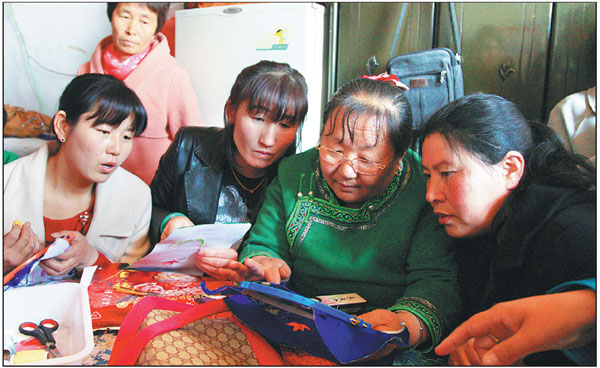|
"In addition to making more money, I have become more confident. I believe I can tackle more difficult patterns now," she said, with an optimistic smile. The measures used in Horqin are perfect for Mu. "Embroidery is part of our ethnic group's heritage, I really enjoy doing it. I used to watch my mother doing it when I was age 4. I've made more than 5,000 yuan in the last six months," she said. At present, about 39 percent of the 281,800 people in Pishan county, Hotan prefecture, southern Xinjiang, live below the poverty line. Government-run embroidery classes are among the measures being used to raise living standards, as Cui Jia reports from Beijing with Yuan Hui in Horqin Right Wing Middle Banner, the Inner Mongolia autonomous region.
E-commerce network "The number of people being lifted out of poverty annually actually began to fall before the latest poverty alleviation approaches were put in place," he said. In December, she began taking embroidery classes arranged by the local government as a part of a targeted poverty relief strategy. At the classes, she was taught how to decorate clothes, slippers and pillowcases with traditional embroidery. When complete, the items are sold online. The area is affected by severe desertification and a fragile environment, which means that farmers such as Mu are constantly concerned that their land will be hit by natural disasters that could leave them destitute and starving. The county, designated a place of "extreme poverty" lies next to the Taklimakan Desert, the largest arid area in the country, and about 99 percent of its population hails from ethnic groups, including Uygurs, Tajiks and Kyrgyzs. However, as a result of initiatives promoted by Xi Jinping, general secretary of the Communist Party of China Central Committee and president of China, the list won't exist after 2020 because all the residents who live below the current poverty line, including Mu, will be lifted out of poverty by then. Tailored measures "We fully respect their choices and make sure those who are willing to move can find new careers," said Ahmet Memet. "It will be more costly and difficult to move forward," said Liu, from the State Council Leading Group Office. Mu Dan is proud that she can now produce all kinds of traditional Mongolian embroidery, much as her mother did. Even better, the 40-year-old farmer in Horqin Right Wing Middle Banner, the Inner Mongolia autonomous region, is excited that her newly developed skills can lift her family out of poverty. The task is a formidable one. Winning the battle in areas of extreme poverty will be difficult, but with enough determination and the right measures, China can secure that victory, he said. An average 13 million people have been lifted above the poverty line in each of the past five years. From 2013 to 2016, the number of people living in poverty fell from 99 million to 43.36 million, and more than 10 million people will be lifted out of poverty this year, Liu said. (编辑:) |
 |
| 首页 | 骨灰传奇 | 经典私服 | 老传奇游戏 |
